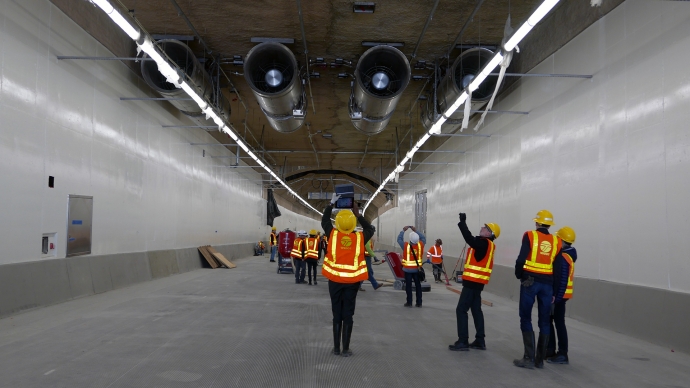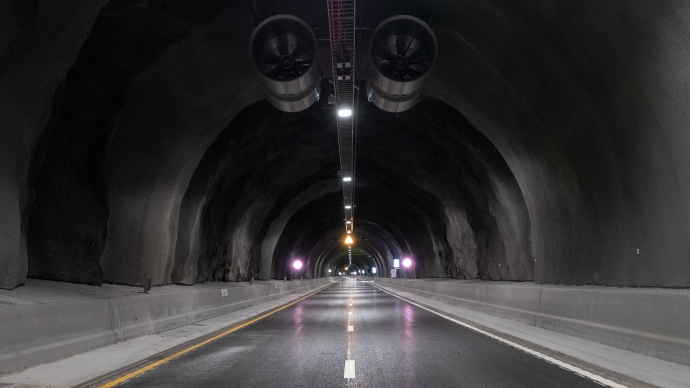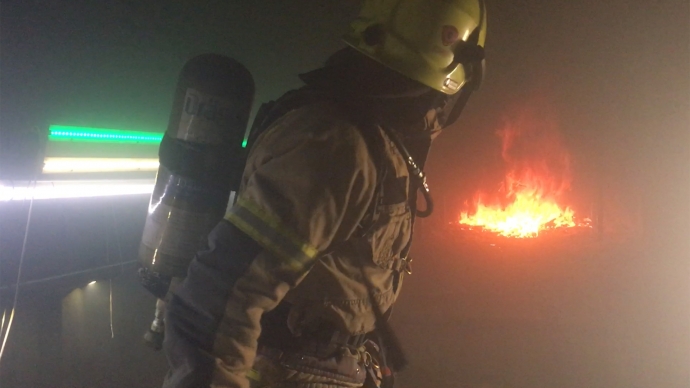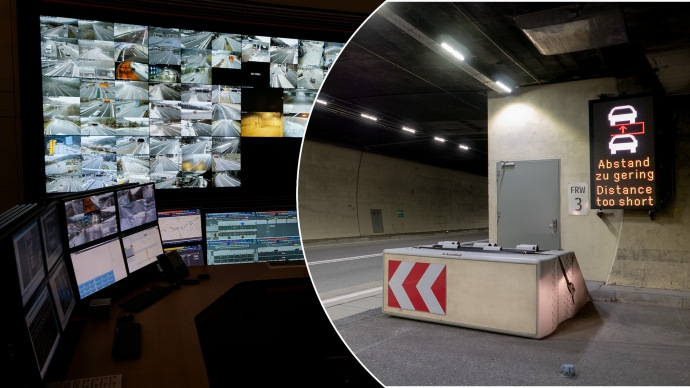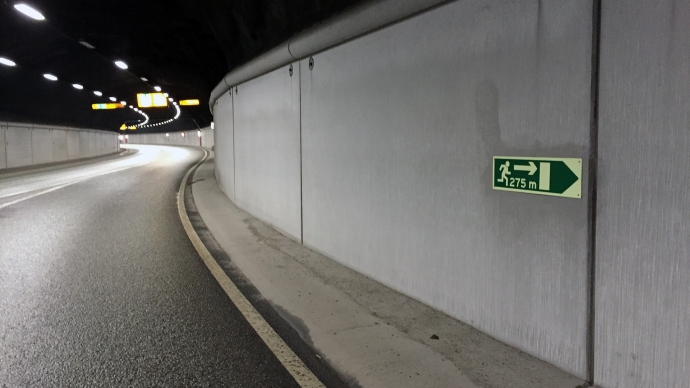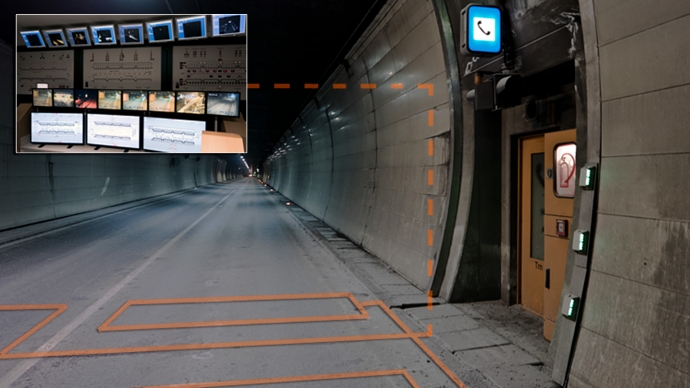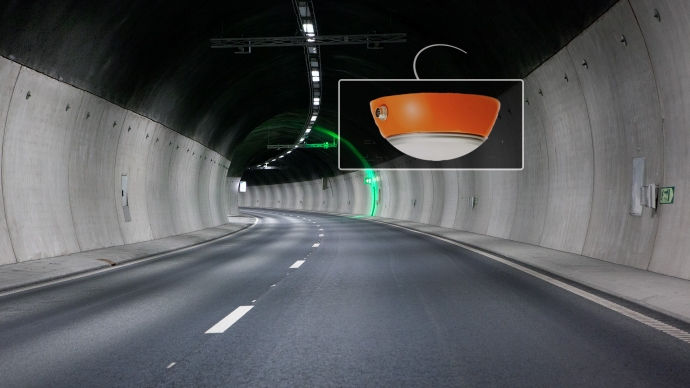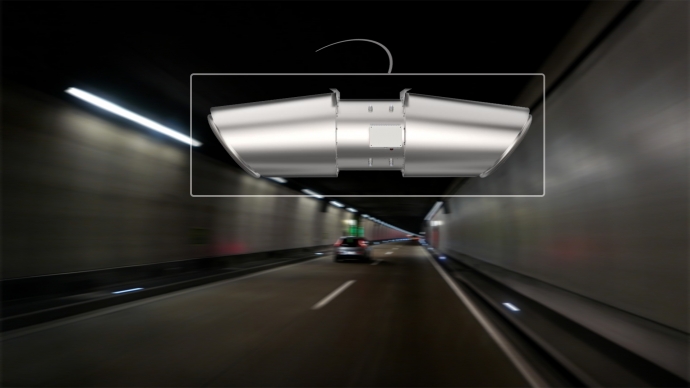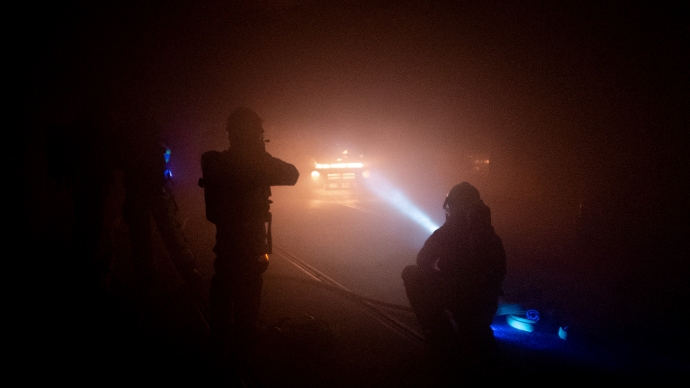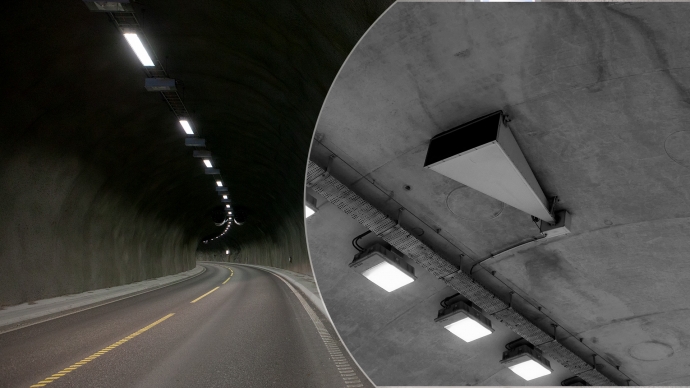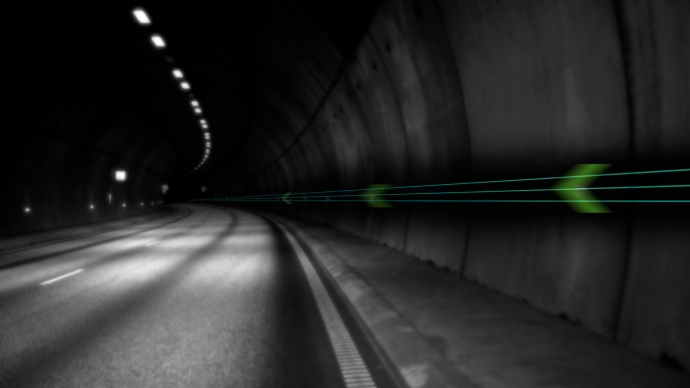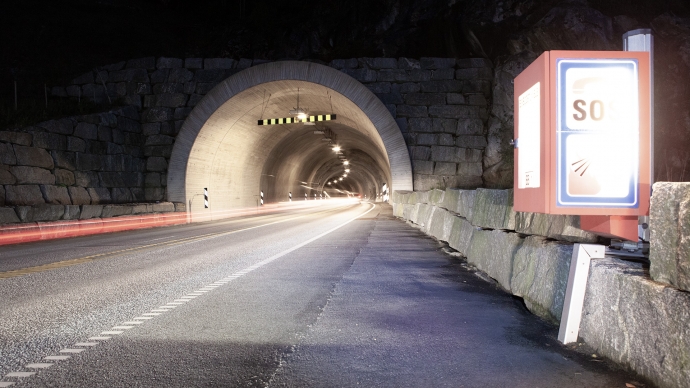To facilitate human evacuation and emergency responder safety, the National Cooperative Highway Research Program (NCHRP, US) recently published guidelines for emergency ventilation smoke control in roadway tunnels (2017).
All Stories
The air velocity in tunnels is important in a tunnel management system and a crucial part of ventilating in both a normal situation and when a fire incident occur. The quality of the output from the automatic control in the SCADA system and decisions that has to be made by the traffic Control Centre is only as good as its sensors.
The purpose of the study was to test different characteristics of evacuation light. The study was carried out in a 40 foot long container and the fixtures were mounted approx. 1 meter above the floor and the study is based on a visual experience of the different light sources, and is considered a preliminary study of performance of evacuation lighting in tunnels.
In the last 3 years 20 tunnels have been installed with acoustic tunnel monitoring detection in Austria. The first pilot where carried out int the 2,4 km long twin tube Kirchdorf tunnel, and the pilot started in 2010.
The IDA Tunnel, software from EQUA Simulation AB, allows the engineer to simulate road and rail tunnel design projects, including full range of ventilation and fire design tasks. The software delivers now improved algorithms that increase robustness and speed to the simulations so that computed results can be animated in the context of a full 3D representation of the tunnel network.
Inductive loops have been used for decades to count vehicles, control traffic-lights, speed-control enforcement and other traffic applications. Inductive loops can be very reliable detection method when it is installed with a certain precission under-ground, protected and secured, deep under the road surface and not influenced by common problems for detection in traffic. Characteristics that is even more important in tunnels, in a hostile environment with a special need for reliable, available and maintainable safety systems.
Multiple Gas Detection (MGD) technology, originally developed for aerospace, is based on the detection of fire related gases, and can be an effective sensor to detect an upcoming fire in a moving vehicle.
Its improtant for any tunnel operators to lower the costs and improve energy efficiency, especially on cost consuming technical facilities as Ventilation systems. The reversible MoJet® tunnel ventilation system typically enhances by 25% the in-tunnel aerodynamic thrust compare to other jet fans.
A great challenge the first responders face during incidents and accidents in tunnels is getting an overview of how many people are in the tunnel, where they are, how to communicate with them, direction they are moving, needs of assistance and how to communicate with incoming motorists about stop in the traffic and diversions. Imagine if you could use the cell phone that everyone is carrying along to solve these issues.
It takes time from the emergency services are notified until they arrive at the tunnel. This must also road users know and the road authority have the responsibility that this assumption is known.
A dynamic evacuation light and sign system, which offers real-time, intelligent control and guiding indication can improve safety in difficult evacuation environments like tunnels. Research points out that during an emergency, people have a tendency to wait for information or instruction rather than seek it out.
By using already installed optical fibre, the Distributed Acoustic Sensing (DAS) technology can detect changes in traffic. OptaSense says a single fibre cable can replace hundreds or thousands of traditional single-point sensors, and give the traffic control centre a warning that something is happening.

 En
En 




